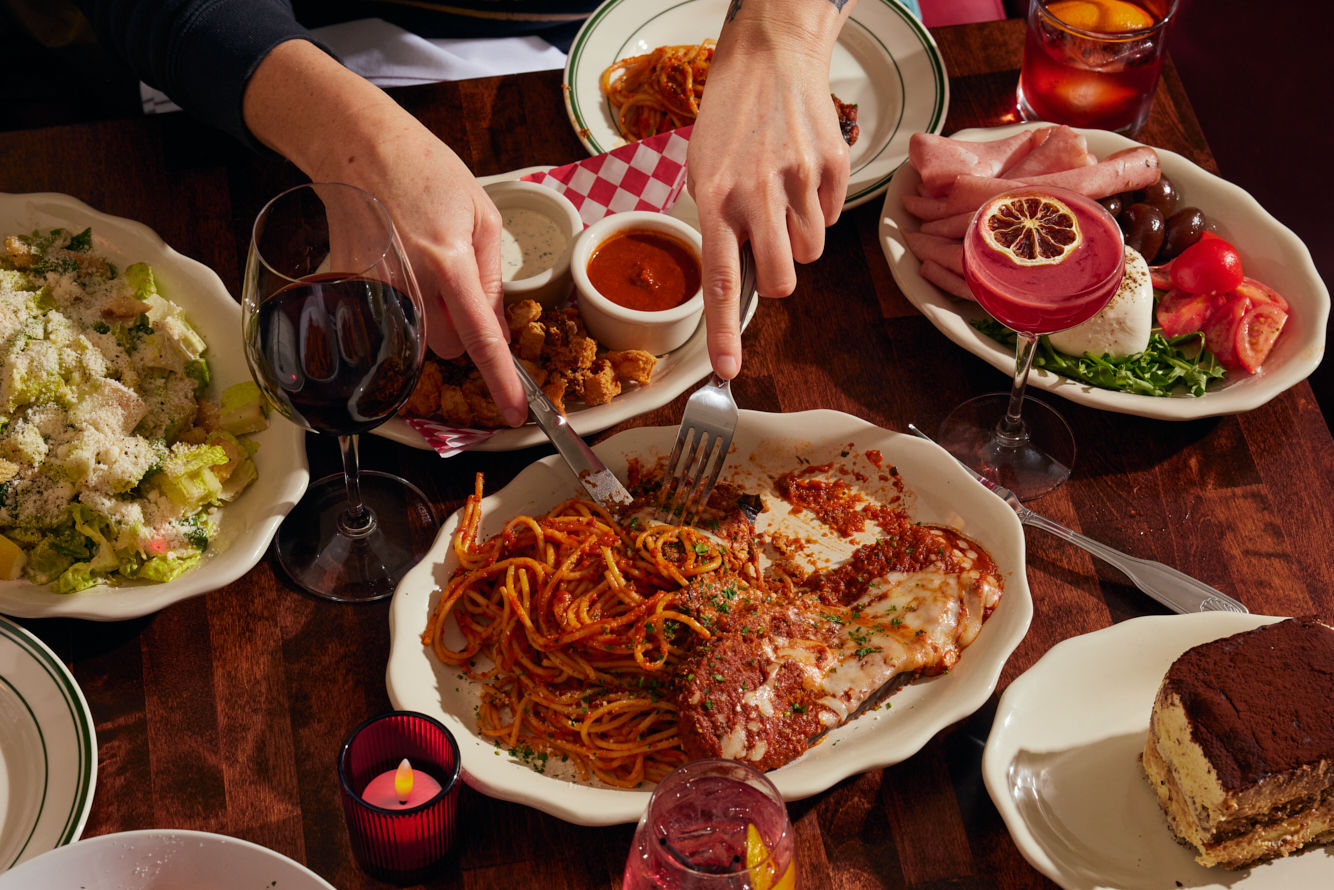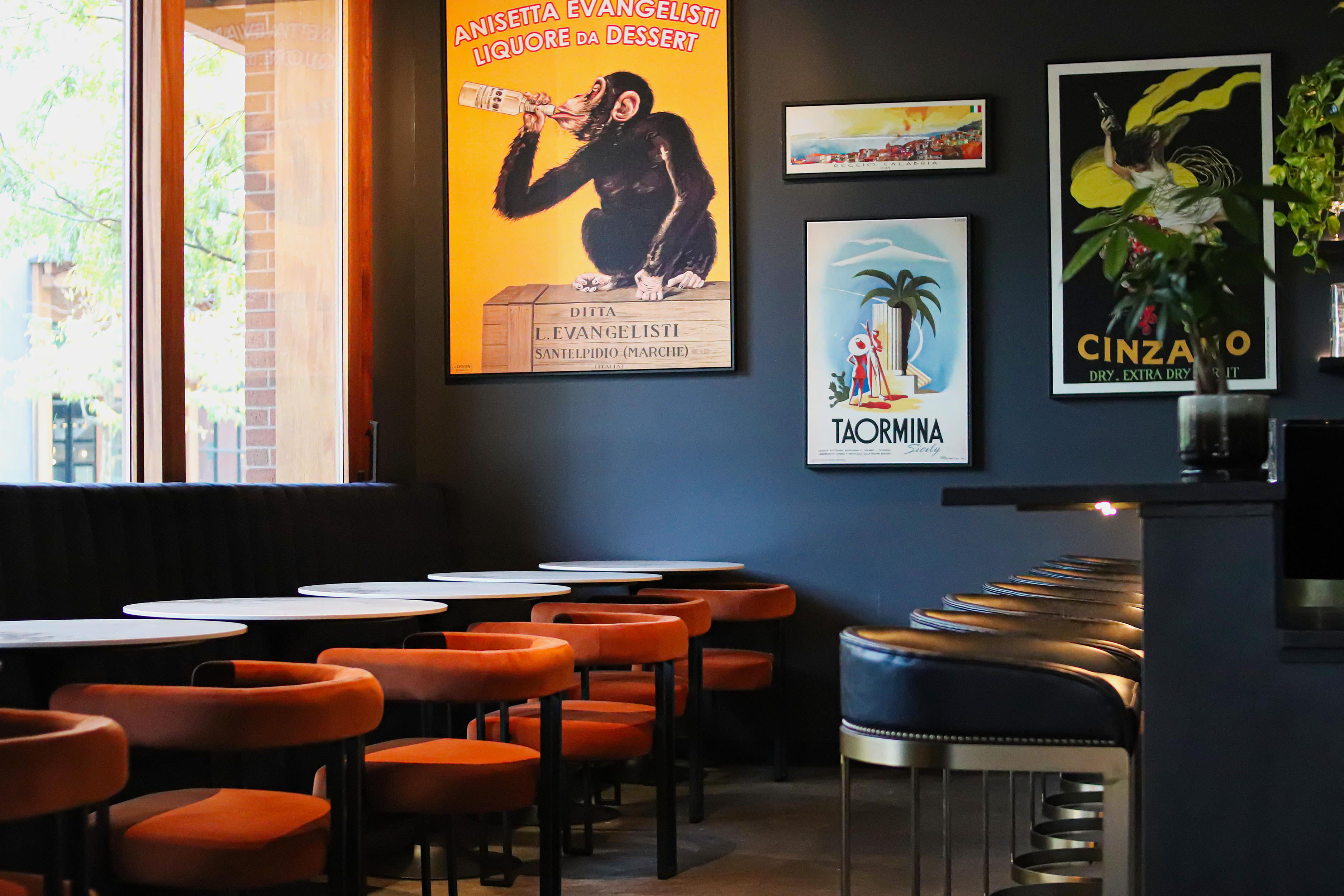República’s New Tasting Menu Showcases Mexican Ingredients, from Escamoles to Huitlacoche
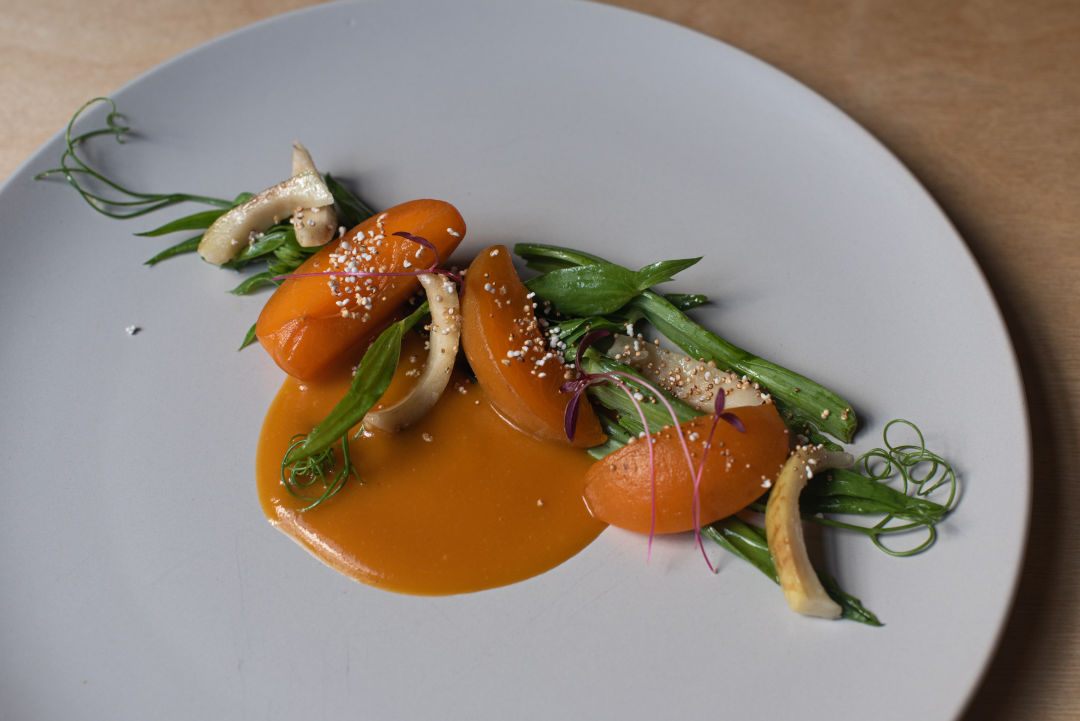
Apricot mole topped with amaranth
Prior to this summer, if you were craving Mexican delicacies like escamoles (ant larvae) or earthy, fresh huitlacoche (corn smut), your best bet would probably be to book a flight from PDX to Mexico City. But ever since República departed from its previous dinner menu of tacos, quesadillas, and guisados and began offering chef’s tasting dinners in June, diners might find these ingredients—plus things like apricot mole, watermelon aguachile, and ancestral maíz—in a $54, constantly changing five-course tasting menu that’s currently booked out a week in advance.
The Pearl District restaurant gets shipments once every week or two full of these hard-to-find ingredients straight from Mexico. They also get local ingredients grown especially for them, like micro papalo. Chef and co-owner Lauro Romero, who recently left his post at King Tide Fish & Shell to work at República full-time, applies his knowledge of French and Japanese cooking techniques to these ingredients, plus his knowledge of Mexican cooking gained growing up in Hidalgo (and frequent phone calls to his mom). Diners can choose from five courses featuring meat and fish, or five courses that showcase vegetables; no substitutions are available, unless you have allergies or dietary restrictions. For another $32, dinner comes with wine pairings from primarily Mexican and Mexican American winemakers—one of the biggest Mexican wine selections you’ll find in the area. Guests can also choose from a menu of thoughtful cocktails and a curated selection of mezcals. And with many courses, you’ll get a tidbit of fascinating food history.
The meal might open with a small bite—para picar—of a tostada with a slice of raw tuna, topped with olive oil and cheese. Your server might say something along the lines of, “This is a tostada made with ancestral maíz, garnished with two ingredients brought to Mexico by the Spanish, cheese and olive oil—where the pre-colonial and the post-colonial meet.”
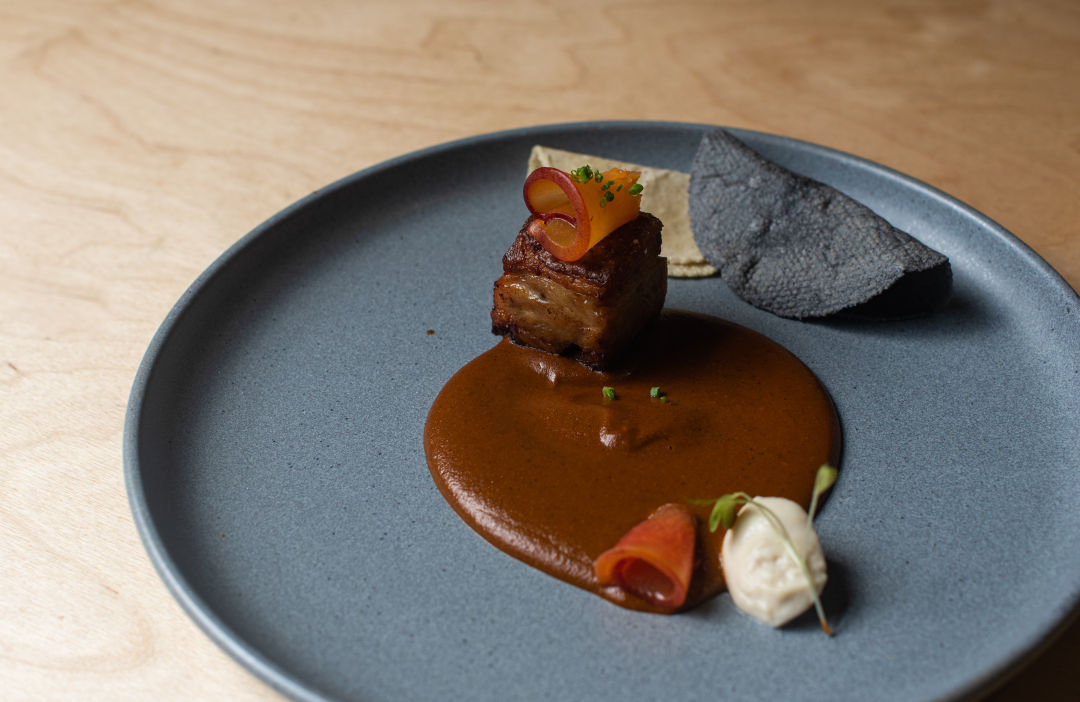
Pork mole
From the beginning, República sets the tone: the food you’re eating, and the food that many of us in the United States know as Mexican food, is a product of colonialism. This is not a decolonized dinner. Yes, there are many pre-Hispanic ingredients on the menu, including escamoles and huitlacoche. But even though the arrival of the Spanish brought a wider range of ingredients to work with, with those ingredients came a lot of pain.
“If we say something's ancestral, it's ancestral,” says pastry chef and co-owner Olivia Bartruff. “[We’re] not giving misnomers to things, or trying to put these foods with rose colored glasses that we have because of the Spanish by calling them Mayan to make you feel better about it.”
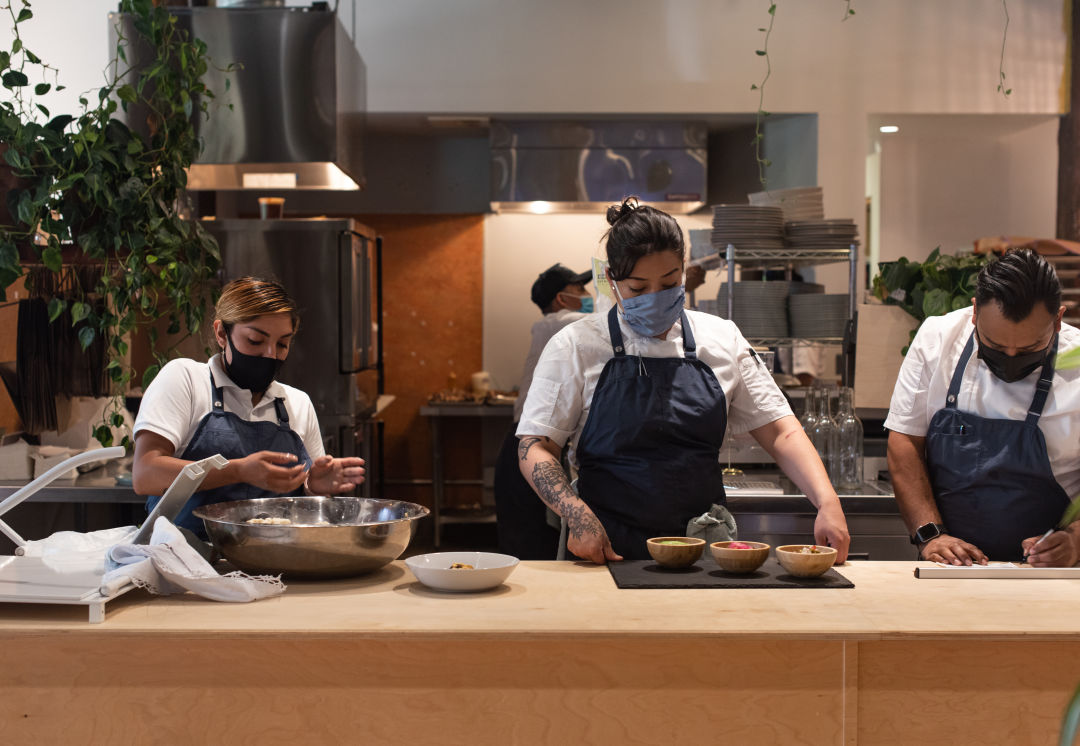
The staff at República in the kitchen
Every time Romero adds a dish to the menu, the staff thoroughly researches the ingredients. Along with a rundown of the ingredients in each dish, guests might hear stories about the dishes in front of them. One ingredient, amaranth, often makes an appearance in the United States as a hippie health food, but as the staff at República learned, it was a valuable commodity for the Aztecs. At República, it makes an appearance atop apricot mole and in a sweet treat served at the end of the meal called alegría: amaranth and peanuts or pumpkin seeds, bound together with honey or caramel. Servers share with diners one theory for why amaranth disappeared from the native diet: amaranth was used to make statues to Aztec deities, and in an attempt to destroy what they viewed as paganism, the Spaniards destroyed the amaranth fields. It was a major source of nutrition, and its near-disappearance is still felt in that region today.
As for the tacos, quesadillas, tortas, soups, and guisados that first put República on the map, you’ll still find those dishes for takeout and dine-in on their daily lunch menu. But even though they’re working with a limited kitchen—there isn’t even a stove, though a wood oven is high on Romero’s wish list—a tasting menu like this was always República’s goal. “The goal was that if we go broke, at least we got to do the thing that we wanted to do from the very first day,” says co-owner Angel Medina. “We weren’t expecting it to be booked up the way it has.”
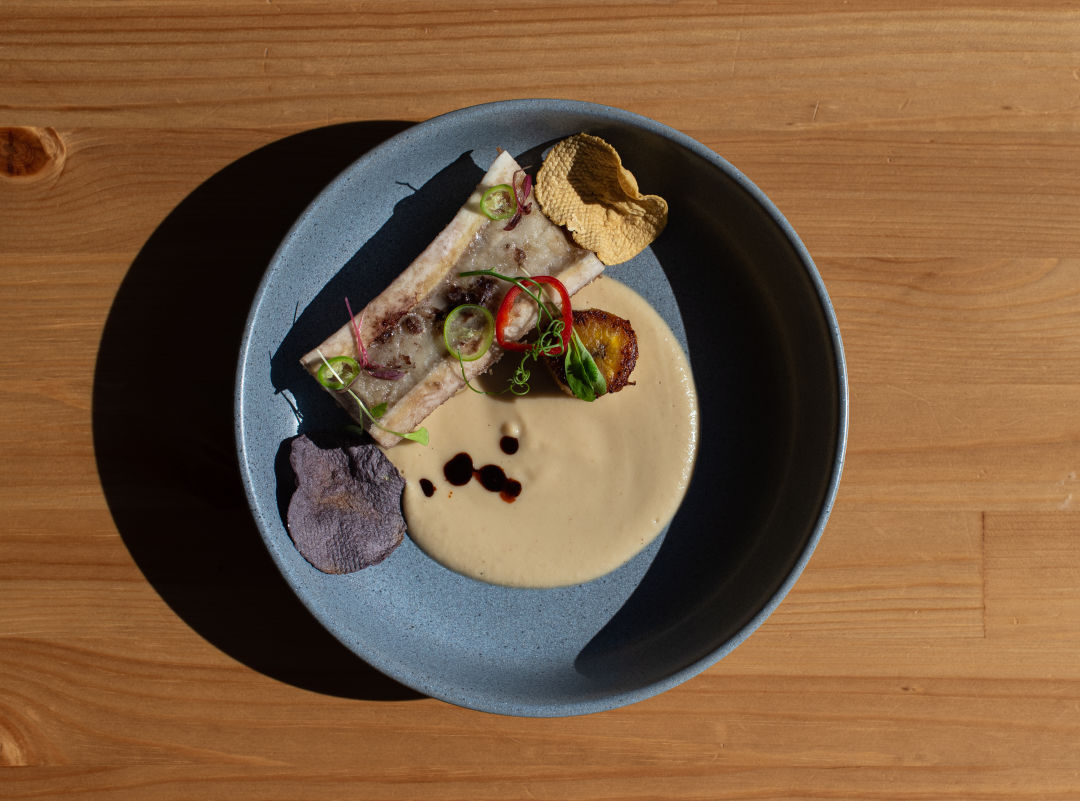
Bone marrow
The three co-owners traveled to Mexico City and Oaxaca City to do research, eating at some of the country’s most famous restaurants like Pujol and Quintonil. “Pujol, what they were doing was like going to an orchestra. The fine tuning of the food, the presentation, that attention to detail, [the service],” says Romero.
But they’re also trying to create a less stiff, more familial experience, one where guests who grew up with these dishes might even have an emotional reaction to the food. (After all, their previous chef’s choice dinner menu was called Guests at a Mexican Household.) One of the co-owners’ favorite meals in Mexico was at Alfonsina, a restaurant inside a home in Oaxaca where the chef’s mother made tortillas outside over a wood fire. “It was very emotional for me because I was telling her, ‘The kitchen reminds me of my grandma's kitchen,” says Romero.
The final dessert at República is nieve de atole, which has a lovely story that I’ll let the servers tell. It’s subtly sweet with blue corn and crisp, thin pieces of tostada—made one diner cry as she recalled her childhood in Mexico, having little to eat other than corn.
“While Pujol is beautifully orchestrated, and we’d like to be beautifully orchestrated, I’ve seen our staff hug people at the end of the night,” Bartruff says. “It's a more friendly, loving experience.”
Republica, 721 NW 9th Ave #175, republicapdx.square.site, @republicapdx


